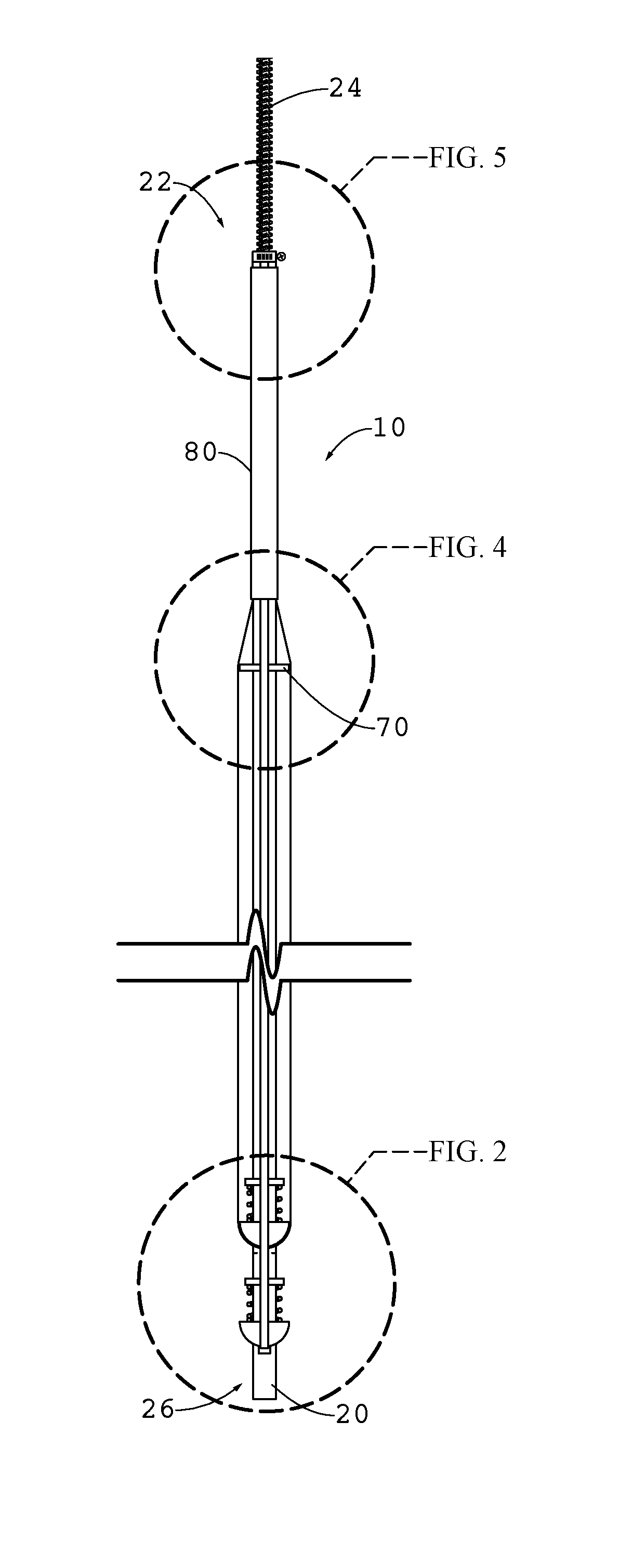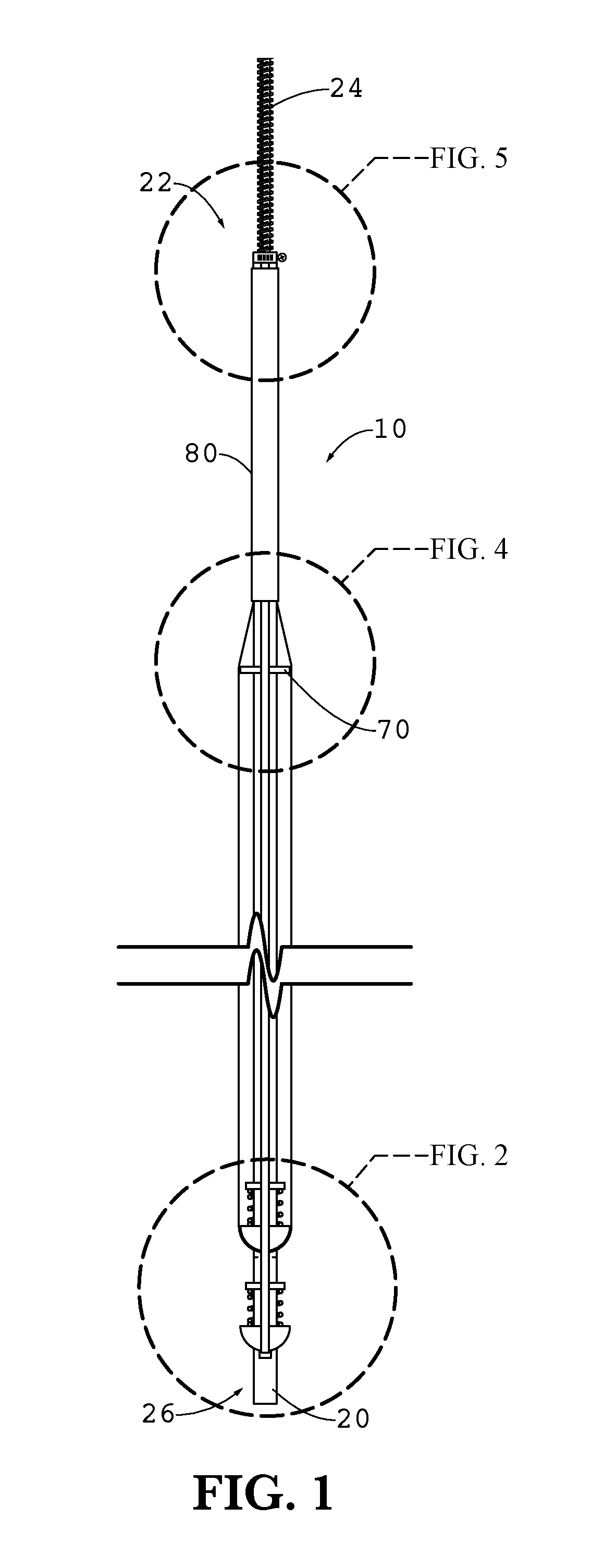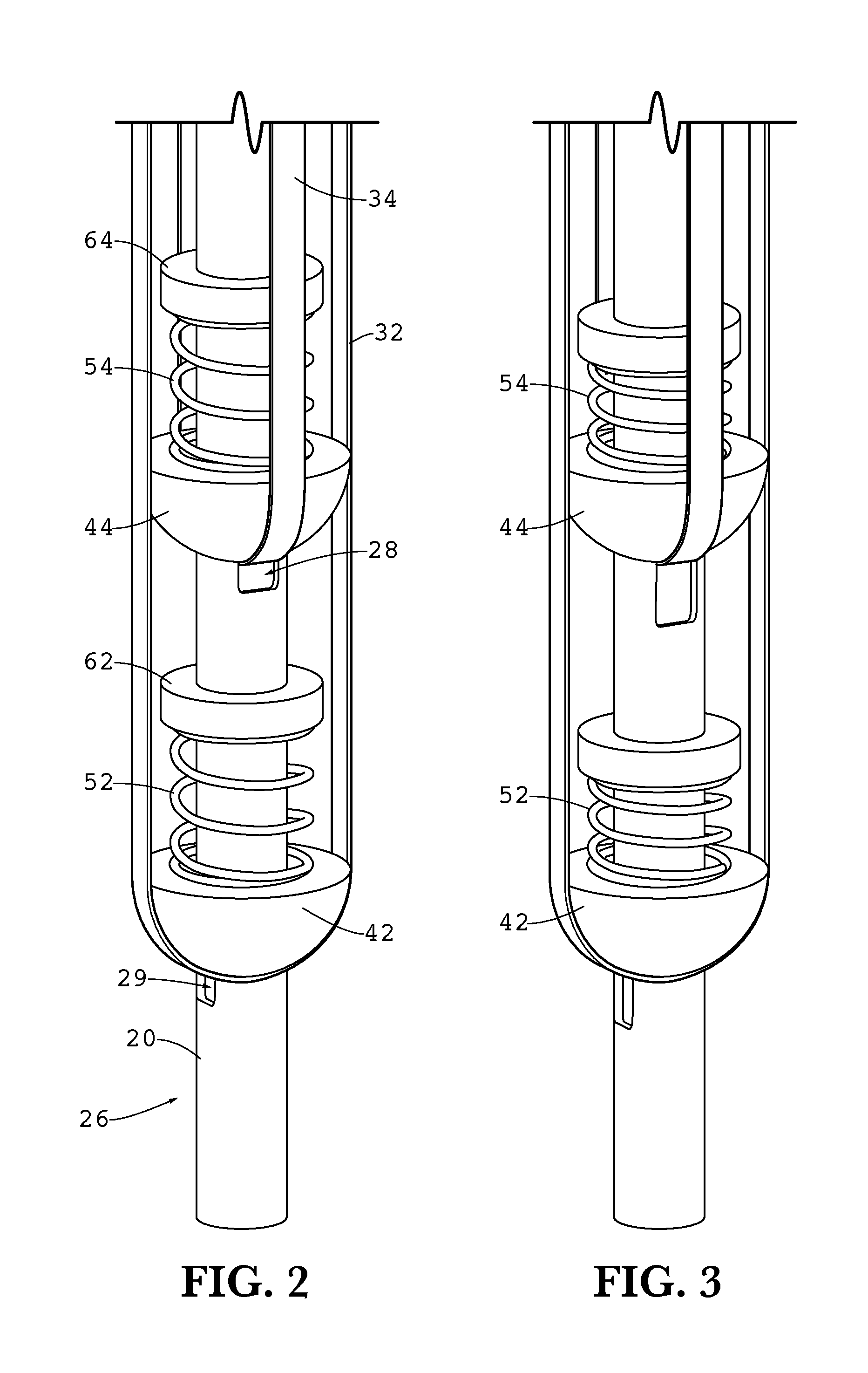Carbon fiber composite discharge electrode with mechanical bias
a discharge electrode and carbon fiber composite technology, applied in the direction of electrode carrying means, electrostatic separation details, solid separation, etc., can solve the problems of high cost of electrodes, and requiring strong support structures, so as to reduce the weight of electrodes and reduce the cost. , the effect of high strength
- Summary
- Abstract
- Description
- Claims
- Application Information
AI Technical Summary
Benefits of technology
Problems solved by technology
Method used
Image
Examples
Embodiment Construction
[0020]As shown in FIG. 1, a discharge electrode 10 includes a non-conductive support rod 20, such as a rod made of a polymer (e.g., poly vinyl chloride, PVC) or a glass fiber-reinforced polymer tube. Electrically conductive, non-metallic fibers such as carbon fibers and carbon nanofibers are infiltrated with a flexible polymer matrix to form at least one composite strand. In some cases in which nanofibers are in a composite, the ends of the nanofibers serve as points to support a corona. The composite strand is supported in the longitudinal direction by the support rod 20, such as by extending the conductive filaments along the rod and applying a bias in the longitudinal direction to maintain the strand in tension.
[0021]One contemplated strand is a carbon fiber reinforced polymer tape (e.g., Polyphenylene sulfide (PPS) polymer with AS4 carbon fiber) that is about 0.5 inch wide and approximately 0.007 inch thick. If different dimensions or materials are preferable, other choices are ...
PUM
 Login to View More
Login to View More Abstract
Description
Claims
Application Information
 Login to View More
Login to View More - R&D
- Intellectual Property
- Life Sciences
- Materials
- Tech Scout
- Unparalleled Data Quality
- Higher Quality Content
- 60% Fewer Hallucinations
Browse by: Latest US Patents, China's latest patents, Technical Efficacy Thesaurus, Application Domain, Technology Topic, Popular Technical Reports.
© 2025 PatSnap. All rights reserved.Legal|Privacy policy|Modern Slavery Act Transparency Statement|Sitemap|About US| Contact US: help@patsnap.com



